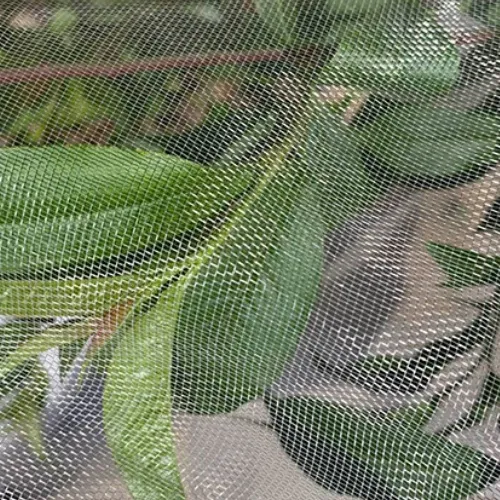-
 Afrikaans
Afrikaans -
 Albanian
Albanian -
 Amharic
Amharic -
 Arabic
Arabic -
 Armenian
Armenian -
 Azerbaijani
Azerbaijani -
 Basque
Basque -
 Belarusian
Belarusian -
 Bengali
Bengali -
 Bosnian
Bosnian -
 Bulgarian
Bulgarian -
 Catalan
Catalan -
 Cebuano
Cebuano -
 China
China -
 Corsican
Corsican -
 Croatian
Croatian -
 Czech
Czech -
 Danish
Danish -
 Dutch
Dutch -
 English
English -
 Esperanto
Esperanto -
 Estonian
Estonian -
 Finnish
Finnish -
 French
French -
 Frisian
Frisian -
 Galician
Galician -
 Georgian
Georgian -
 German
German -
 Greek
Greek -
 Gujarati
Gujarati -
 Haitian Creole
Haitian Creole -
 hausa
hausa -
 hawaiian
hawaiian -
 Hebrew
Hebrew -
 Hindi
Hindi -
 Miao
Miao -
 Hungarian
Hungarian -
 Icelandic
Icelandic -
 igbo
igbo -
 Indonesian
Indonesian -
 irish
irish -
 Italian
Italian -
 Japanese
Japanese -
 Javanese
Javanese -
 Kannada
Kannada -
 kazakh
kazakh -
 Khmer
Khmer -
 Rwandese
Rwandese -
 Korean
Korean -
 Kurdish
Kurdish -
 Kyrgyz
Kyrgyz -
 Lao
Lao -
 Latin
Latin -
 Latvian
Latvian -
 Lithuanian
Lithuanian -
 Luxembourgish
Luxembourgish -
 Macedonian
Macedonian -
 Malgashi
Malgashi -
 Malay
Malay -
 Malayalam
Malayalam -
 Maltese
Maltese -
 Maori
Maori -
 Marathi
Marathi -
 Mongolian
Mongolian -
 Myanmar
Myanmar -
 Nepali
Nepali -
 Norwegian
Norwegian -
 Norwegian
Norwegian -
 Occitan
Occitan -
 Pashto
Pashto -
 Persian
Persian -
 Polish
Polish -
 Portuguese
Portuguese -
 Punjabi
Punjabi -
 Romanian
Romanian -
 Russian
Russian -
 Samoan
Samoan -
 Scottish Gaelic
Scottish Gaelic -
 Serbian
Serbian -
 Sesotho
Sesotho -
 Shona
Shona -
 Sindhi
Sindhi -
 Sinhala
Sinhala -
 Slovak
Slovak -
 Slovenian
Slovenian -
 Somali
Somali -
 Spanish
Spanish -
 Sundanese
Sundanese -
 Swahili
Swahili -
 Swedish
Swedish -
 Tagalog
Tagalog -
 Tajik
Tajik -
 Tamil
Tamil -
 Tatar
Tatar -
 Telugu
Telugu -
 Thai
Thai -
 Turkish
Turkish -
 Turkmen
Turkmen -
 Ukrainian
Ukrainian -
 Urdu
Urdu -
 Uighur
Uighur -
 Uzbek
Uzbek -
 Vietnamese
Vietnamese -
 Welsh
Welsh -
 Bantu
Bantu -
 Yiddish
Yiddish -
 Yoruba
Yoruba -
 Zulu
Zulu
Applications and Advantages of Welded Wire Fabric in Construction and Reinforcement
The Importance of Welded Wire Fabric in Construction and Industrial Applications
Welded wire fabric, often referred to as welded wire mesh, is an essential material in various construction and industrial applications. Composed of a grid of interwoven steel wires, which are welded at their intersections, this versatile product is known for its strength, durability, and flexibility. Its uses span from reinforcing concrete structures to serving as a barrier in agricultural settings, showcasing its multifaceted benefits.
Structure and Composition
Welded wire fabric is typically made from high-quality steel wire, known for its tensile strength. These wires are arranged in a grid pattern at specified intervals, creating a mesh that can vary in spacing and thickness depending on its intended use. The welding process at each intersection ensures that the mesh maintains structural integrity under tension and compression, making it a reliable choice for various applications.
Applications in Construction
One of the most significant uses of welded wire fabric is in the reinforcement of concrete. It helps to distribute loads evenly, reducing the risk of cracks and failures in concrete structures, such as slabs, foundations, and walls. By incorporating welded wire fabric in concrete pours, builders can enhance the tensile strength of their work, leading to longer-lasting structures. This application is particularly crucial in areas subject to seismic activity or high stresses.
In addition to reinforcing concrete, welded wire fabric is used in fencing and security applications. Its robust construction makes it a preferred choice for perimeter fencing, dog pens, and agricultural enclosures. Welded wire fences provide a physical barrier that is difficult to breach, ensuring safety for livestock and properties alike.
Industrial Uses
welded wire fabric

Beyond construction, welded wire fabric plays a vital role in various industrial settings. For instance, it can be found in the production of shelves and racks, particularly in warehouses and retail environments where durable storage solutions are required. The mesh allows for optimal airflow around stored products while maintaining structural stability.
Moreover, welded wire fabric is often utilized in the manufacturing of industrial accessories, such as cages, bins, and trays. Its sturdy design makes it ideal for handling heavy loads and materials in factories and distribution centers, contributing to efficient operations and workflow.
Advantages of Welded Wire Fabric
The benefits of using welded wire fabric extend beyond its mechanical properties. First, it is relatively easy to install. Unlike traditional rebar, which requires labor-intensive tying and placement, welded wire mesh can be laid down quickly, saving time and labor costs on construction sites. Additionally, it is lightweight yet strong, making transportation and handling more manageable.
Another significant advantage is its resistance to corrosion, especially when treated with protective coatings. This feature allows welded wire fabric to perform well in harsh environments, such as coastal areas or chemical plants, thus prolonging its lifespan and reducing maintenance costs.
Conclusion
Welded wire fabric is a prime example of how innovation in material science can lead to enhanced construction techniques and industrial practices. Its versatility and strength make it an indispensable resource in various fields, from building infrastructure to securing agricultural assets. As industries continue to grow and evolve, the demand for reliable materials like welded wire fabric will only increase, underscoring its importance in modern construction and industrial applications.
-
Shipping Plastic Bags for Every NeedNewsJul.24,2025
-
Safety Netting: Your Shield in ConstructionNewsJul.24,2025
-
Plastic Mesh Netting for Everyday UseNewsJul.24,2025
-
Nylon Netting for Every UseNewsJul.24,2025
-
Mesh Breeder Box for Fish TanksNewsJul.24,2025
-
Expanded Steel Mesh Offers Durable VersatilityNewsJul.24,2025











